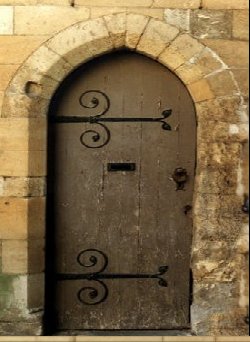|
|
|
|
Doors to the Past |
|
Martha CommunityMiss Lou Moore, daughter of Wilson Moore, who came from Virginia. To this union was born seven children, all of whom live in Barboursville. This farm is now owned by Captain W,. Turner. The land on the south of this farm was owned by the Peyton and Swann families. These lands have passed into other hands. Daniel Swann, one of the heirs lives on a portion of this land. Also Robert and Edgar Swann live in the neighborhood and are good men and have raised good families. Oliver Peyton and sisters, Mrs. John Hash and Mrs. Fred Lambert, live on portions of the Peyton estate. The mother, Mrs. Elisha Peyton is living with or near her children. She is a good woman and has raised a splendid family, all of whom are progressive citizens. Adjoining these farms lies the Beverly Johnson farm. He lived in Virginia, and sold his farm of 1200 acres to John Morris, the writer's great grandfather, sometime in the fifties. Later William C. Miller, father of J. W. Miller of Barboursville purchased and lived on this farm. The Miller family were prominent in the county, some of whom filled important offices in the state. J. W. Miller is the only son living. This farm was sold to the Malcolms, who still own it. The Guyan Valley Railroad runs through or near all the farms that have been mentioned, which makes this a very important part of Cabell County. I would not leave the impression that we have all the good things now and had none in the good old days of our fathers and grandfathers. I can well remember the herds of fine Shorthorn cattle that grazed on the majestic hills and fertile valleys, smothering as it were in their fat. Also fine fat hogs that could scarcely walk. Southdown and Merino sheep were seen on nearly every farm with their heavy well-matured fleeces. In the spring of the year it was great to see the farmer boys corraling the sheep near a stream and washing them so the fleeces would be clean when they were sheared. Then would come the good old wool picking times when the housewives would meet at each other's homes and pick wool and chat so merrily over their good times and good things to eat. And this is not all. After the wool was picked it was then sent to Dusenberry's mill or carding machine and made into rolls. All? O, no! The rolls were brought home and ( 6 )
|
